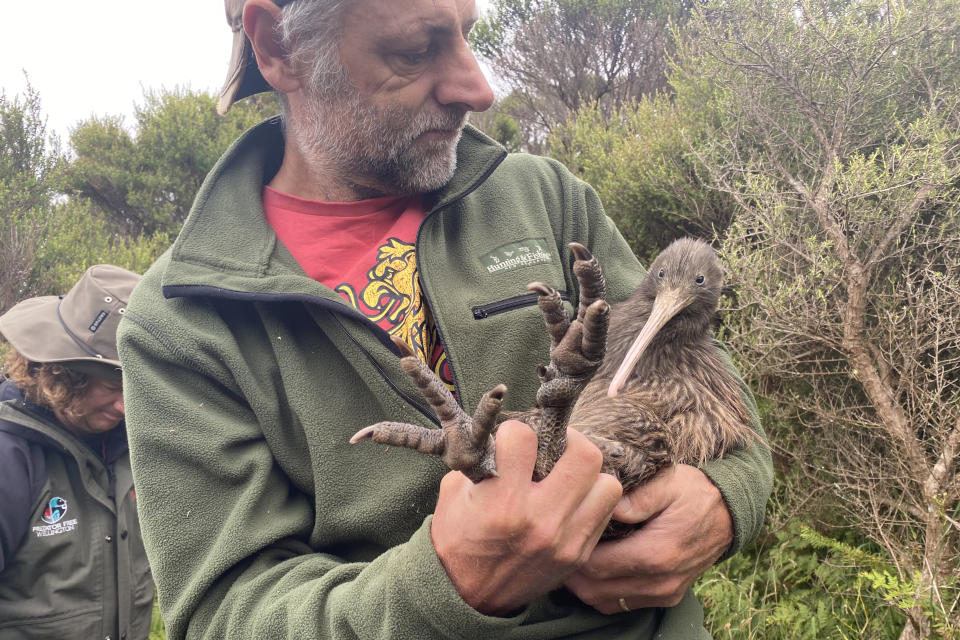Overview
Wildlife protectors in Wellington have discovered a pair of Kiwi hatchlings, marking the first reported natural births of these iconic birds in the New Zealand capital in over 150 years.
This exciting discovery follows closely on the heels of the Capital Kiwi Project’s efforts, which successfully reintroduced the cherished national bird to the city, home to approximately 400,000 residents, just a year ago.

What is the Capital Kiwi Project?
The Capital Kiwi Project is on a mission to revive a thriving wild Kiwi population in the heart of Wellington. The Kiwi holds a special place as a symbol of New Zealand’s identity and culture.
By eliminating critical predator threats and fostering a community dedicated to being guardians, the mission aims to create an environment where people and Kiwi coexist harmoniously. The vision is to build a future where New Zealand, as a community, shares the land with the iconic bird that inspires their name.

This ambitious community conservation initiative was conceived and propelled by the locals. It stands firmly on the support of landowners, tangata whenua, and the broader community. Despite its unprecedented scale, the vision is grounded in realism. The team comprises some of New Zealand’s most seasoned Kiwi conservation and pest control experts. Their track record includes successfully fostering growing Kiwi populations in various regions nationwide.
More about the Kiwi Births
These newborns in Makara, just a short 25-minute jaunt from Wellington’s city centre, bring the local count to 65 North Island brown Kiwis.
While the brown Kiwi is among New Zealand’s more prevalent Kiwi species, the country’s Department of Conservation warns that without sufficient conservation efforts and support, these birds could face extinction in the wild within two generations.
Anticipating the arrival of 18 more brown Kiwi chicks, the Capital Kiwi Project is committed to establishing a robust, wild Kiwi population in New Zealand’s capital. The project plans to employ transmitters to closely monitor the two recent Kiwi hatchlings and any others that come into the world as part of this vital conservation initiative.
These flightless wonders, once a thriving population of approximately 12 million in New Zealand, are now reduced to a mere 68,000, as the Save the Kiwi charity reported. This organisation is one of about 90 Kiwi conservation programs working to rejuvenate the population.
In 1991, the New Zealand Department of Conservation initiated the Kiwi Recovery Plan. This comprehensive plan zeroed in on predator control. It actively involved communities in the conservation efforts, marking a significant step toward safeguarding the future of these iconic birds.
The New Zealand Department of Conservation reveals that the Kiwi population in the country is on a decline, averaging about 2% each year, primarily attributed to predators such as stoats, cats, dogs, and ferrets.
As ‘Save the Kiwi’ reported, 95% of Kiwis born in the wild in New Zealand face a premature demise before adulthood.

Addressing the challenges, Capital Kiwi Project team leader Paul Ward highlighted that adult Kiwis mainly contend with roaming dogs. At the same time, stoats pose a significant threat by preying on the chicks before they reach a size to defend themselves. Despite these challenges, Ward remains hopeful about the project’s success, especially following the release of 63 Kiwis near Wellington last November—an event marking the first time in about a century that wild Kiwis have inhabited the area.
Conclusion
While celebrating the rediscovery of Kiwi in Wellington, it’s vital to recognise Earth as a shared habitat for countless species. The success of the Capital Kiwi Project highlights our capacity to preserve biodiversity. Let this moment inspire a collective commitment to coexist harmoniously with the diverse life forms on our planet, reinforcing the understanding that Earth is a shared home for all its inhabitants.













Comments 1